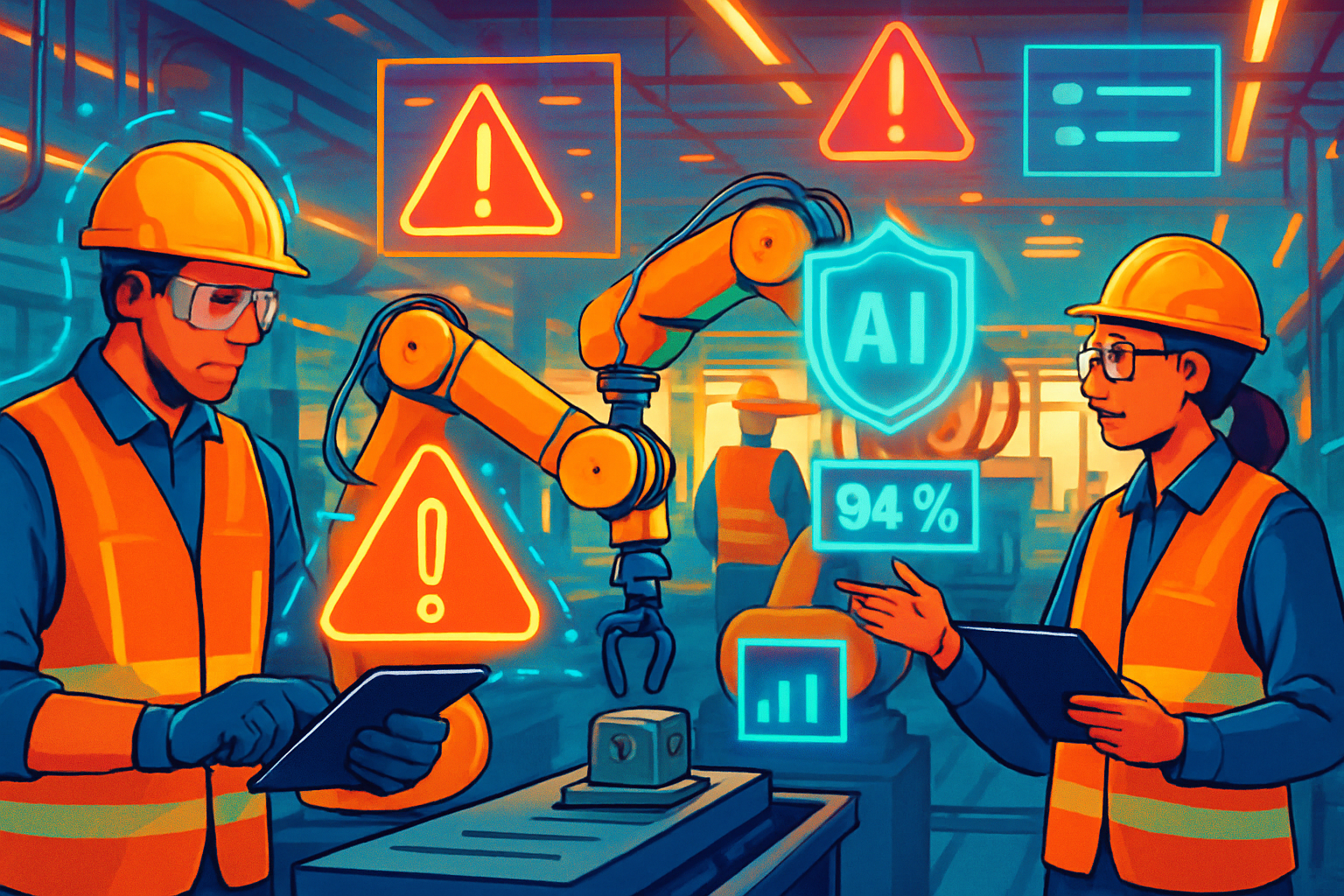
AI CERTs
2 months ago
Ericsson Fuels AI Safety Intelligence Revolution
Forklifts, pallets, and tight aisles create hidden hazards across modern warehouses. Consequently, safety teams often scramble after accidents, not before them. Voxel, a San Francisco startup, claims to flip that script using computer vision and AI. On 29 October 2025, Ericsson Ventures placed an undisclosed bet on the company’s global ambitions. Moreover, the investment signals fast-maturing demand for AI Safety Intelligence solutions in heavy industry. In this article, we unpack the deal, the technology, market context, and privacy debates influencing adoption. Readers will also discover certification paths that strengthen enterprise safety programs.
Global Funding Momentum Rise
Investor interest in AI Safety Intelligence has escalated during the past two years. Additionally, Voxel’s June 2025 Series B secured USD 44 million, building on earlier rounds. Ericsson’s follow-on investment lifts total capital to roughly USD 64 million. Meanwhile, rival Intenseye raised USD 64 million in February 2024, highlighting wider category enthusiasm.

- Voxel reports 147% year-over-year revenue growth.
- Net revenue retention stands at 202%.
- Sites have recorded up to 91% fewer injuries, saving USD 2.2 million over two years.
These statistics attract insurers that crave concrete AI risk prevention outcomes. Consequently, Tokio Marine and other carriers have joined recent funding rounds. These moves confirm market conviction that proactive analytics reduce loss costs.
The funding surge underscores strong investor appetite. However, understanding Ericsson’s motives provides deeper strategic insight into the partnership ahead.
Ericsson Partnership Strategic Rationale
Ericsson Ventures invests across networking, security, and industrial automation. Therefore, backing Voxel aligns with its edge-compute roadmap. José Suarez, head of the venture arm, said the platform "delivers tangible results, reducing incidents and delivering immediate ROI." Furthermore, Ericsson’s telecom footprint offers Voxel global channels and low-latency edge infrastructure.
Vernon O’Donnell, Voxel’s CEO, framed the deal as a "shared vision" partnership. Consequently, the startup gains distribution muscle without sacrificing independence. Moreover, Ericsson can embed AI Safety Intelligence into private 5G offerings, strengthening enterprise value propositions.
The rationale centers on three levers: edge connectivity, integrated safety analytics, and cross-selling to manufacturing clients. These factors could accelerate adoption of workplace surveillance tech across continents.
The strategic fit appears compelling. Nevertheless, technology capabilities must scale to meet heightened expectations.
Technology Behind Safety Platform
Voxel ingests video from existing CCTV networks, minimizing installation costs. Models run on edge devices for low-latency alerts; cloud pipelines aggregate data for trend analysis. Consequently, customers receive near-real-time notifications when operators skip protective gear or forklifts breach safe zones.
The company recently launched "Actions," a workflow layer that converts detections into assigned tasks. Moreover, the feature closes the loop between alert and resolution, boosting accountability. Such capabilities illustrate how AI Safety Intelligence evolves beyond simple detection.
Key use cases span:
- Forklift-pedestrian near-miss monitoring
- Ergonomic risk scoring to aid industrial automation projects
- PPE compliance verification under strict regulatory regimes
Professionals can enhance their expertise with the AI+ Security Level 2™ certification. Additionally, the course dives deep into computer-vision model governance, an area critical for sustaining low false-positive rates.
Voxel’s architecture supports both on-premises and cloud deployment. Consequently, organizations with strict data-sovereignty requirements can still pursue AI risk prevention goals. The technical foundation looks robust, yet market growth projections will determine long-term momentum.
Technology advances set the stage. In contrast, market forecasts reveal the potential scale awaiting successful vendors.
Market Growth Forecasts Ahead
Mordor Intelligence projects the workplace safety market will reach USD 37.9 billion by 2030. Similarly, MarketsandMarkets forecasts USD 38.6 billion within the same period. These outlooks imply double-digit compound growth exceeding 12% annually.
Moreover, specialized niches such as warehouse analytics and workplace surveillance tech show comparable expansion. Consequently, vendors offering seamless integration with industrial automation platforms enjoy a favorable runway.
Adoption drivers include rising insurance premiums, labor shortages, and stricter environmental, health, and safety regulations. Furthermore, edge computing costs continue to fall, making real-time analysis economically viable.
Market projections provide optimistic numbers. However, risks and ethical questions could temper enthusiasm if left unaddressed.
Risks And Ethical Concerns
Worker privacy remains the foremost challenge for AI Safety Intelligence. Civil-liberty groups warn that continuous video analysis can erode trust and invite misuse for productivity tracking. Additionally, regional regulations such as GDPR impose strict consent and data retention rules.
False positives also burden frontline teams. Nevertheless, Voxel claims tuning procedures reduce alert noise. Meanwhile, cultural adoption gaps persist; technology alone cannot guarantee safer behaviors.
Experts suggest governance frameworks that separate safety data from performance evaluation. Moreover, anonymization techniques, such as face blurring, help reassure employees. Including workforce representatives in deployment planning further builds legitimacy.
Privacy and accuracy hurdles are significant. Therefore, understanding the competitive landscape helps gauge how vendors differentiate to address these issues.
Competitive Landscape Snapshot Now
Voxel competes with Intenseye, viAct, Core9, and visionAI. Additionally, wearable-centric firms like StrongArm target ergonomic monitoring. Each player touts distinctive algorithms, dashboards, and integration depths.
Intenseye’s USD 64 million Series B underscores confidence in workplace surveillance tech. Meanwhile, viAct focuses on construction sites and regulatory reporting needs. Vendors aim to embed products into broader industrial automation ecosystems, partnering with MES and ERP providers.
Competitive differentiation often hinges on:
- Alert accuracy and model transparency
- Workflow integration breadth
- Regional privacy compliance features
Market rivalry fosters rapid innovation. Subsequently, strategic guidance helps decision-makers maximize return on adoption.
Strategic Takeaways Forward Path
Ericsson’s backing legitimizes AI Safety Intelligence for global enterprises seeking scalable AI risk prevention. Moreover, funding momentum signals investor belief in measurable ROI. However, privacy governance and organizational change remain essential for sustained success.
Decision-makers should pilot solutions that leverage existing cameras, integrate action tracking, and respect regional regulations. Additionally, leaders can future-proof skills through the AI+ Security Level 2™ credential.
Ultimately, companies that marry advanced analytics with transparent workforce policies will realize fewer injuries and stronger margins. Consequently, the next wave of AI Safety Intelligence deployments could redefine operational excellence across factories, warehouses, and logistics hubs.



